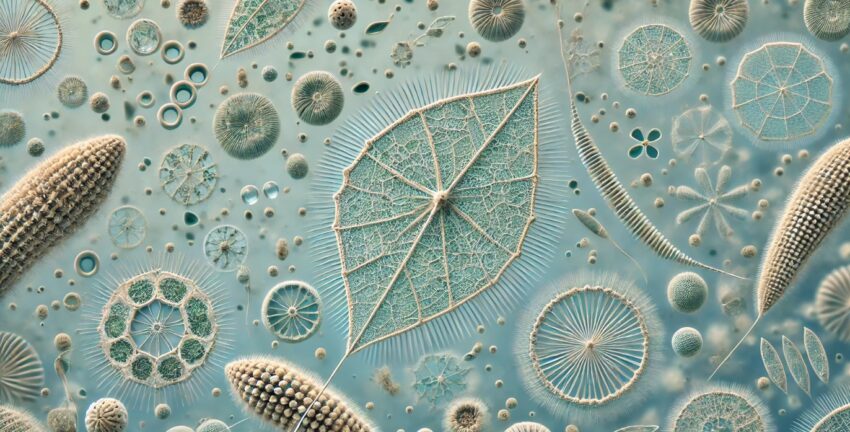| Listen to our audio presentation: Quantum Entanglement |
Recent research led by bioengineers and genomics experts at the University of California, San Diego, has uncovered groundbreaking insights into how diatoms, single-celled plankton, accumulate carbon. Published in Science Advances on July 17, 2024, the study reveals that diatoms not only rely on photosynthesis but also feed directly on organic carbon, challenging previous assumptions about their role in the global carbon cycle.
Diatoms consume carbon in two ways:
- Photosynthesis: Diatoms convert carbon dioxide into organic carbon using sunlight.
- Direct Organic Carbon Consumption: Diatoms feed directly on organic carbon sources such as plankton.
The team focused on the diatom species Cylindrotheca closterium, found in oceans worldwide. They discovered that this diatom regularly combines photosynthesis with direct consumption of organic carbon from sources like plankton. This dual approach was evident in over 70% of the water samples analyzed from various oceans.
According to UC San Diego Professor Karsten Zengler, who is affiliated with multiple departments including Pediatrics and Bioengineering, these findings suggest that diatoms do not rely solely on carbon dioxide fixation for growth and biomass production. This revelation could significantly impact our understanding of how diatoms contribute to carbon sequestration and the broader global carbon cycle.
The Role of Bacteria
The study also hints at a symbiotic relationship between diatoms and specific bacteria. The researchers found a clear signal of bacteria-diatom interactions that facilitate the mixotrophic behavior of Cylindrotheca closterium. These bacteria might be directly feeding organic carbon to the diatoms, aiding their growth and success as a key component of marine ecosystems.
Despite analyzing various physical and chemical parameters in the water samples, the researchers did not find any correlation between these factors and the diatoms’ mixotrophic strategies. However, the presence of certain bacterial populations alongside the diatoms was a significant indicator of this behavior.
Implications for the Global Carbon Cycle
The research team’s genome-scale metabolic modeling, constrained with global gene expression data from the TARA ocean expedition, supports recent lab experiments indicating that diatoms can adopt alternative carbon intake strategies. This innovative approach enabled the team to unravel the complex metabolism of Cylindrotheca closterium and understand its mixotrophic nature.
Zengler emphasized that these results could lead to a reevaluation of global carbon cycling models. By demonstrating that diatoms can also consume organic carbon, the study provides a more comprehensive view of their role in marine food webs, oxygen production, and carbon sequestration.
The UC San Diego team plans to expand their research to determine how widespread this mixotrophic behavior is among other diatom species. Further studies will also explore the benefits that bacteria derive from their relationship with diatoms.
This groundbreaking research by UC San Diego bioengineers and genomics experts has opened new avenues for understanding the intricate dynamics of ocean ecosystems and the global carbon cycle. As we continue to face the challenges of climate change, these insights into the behavior of diatoms could prove crucial for developing more accurate models and strategies for carbon management.
- Dual Carbon Intake: UC San Diego researchers found diatoms utilize both photosynthesis and direct organic carbon consumption.
- Significant Findings: Over 70% of ocean samples revealed diatoms’ mixotrophic behavior.
- Bacteria Symbiosis: Study suggests specific bacteria may assist diatoms in their dual carbon consumption.
- Carbon Cycle Impact: Discovery could alter global carbon cycling models, shifting our understanding of diatoms’ roles.
- Future Research: Plans to investigate mixotrophy in other diatom species and explore bacteria-diatom relationships further.
Resources:
- UC San Diego

